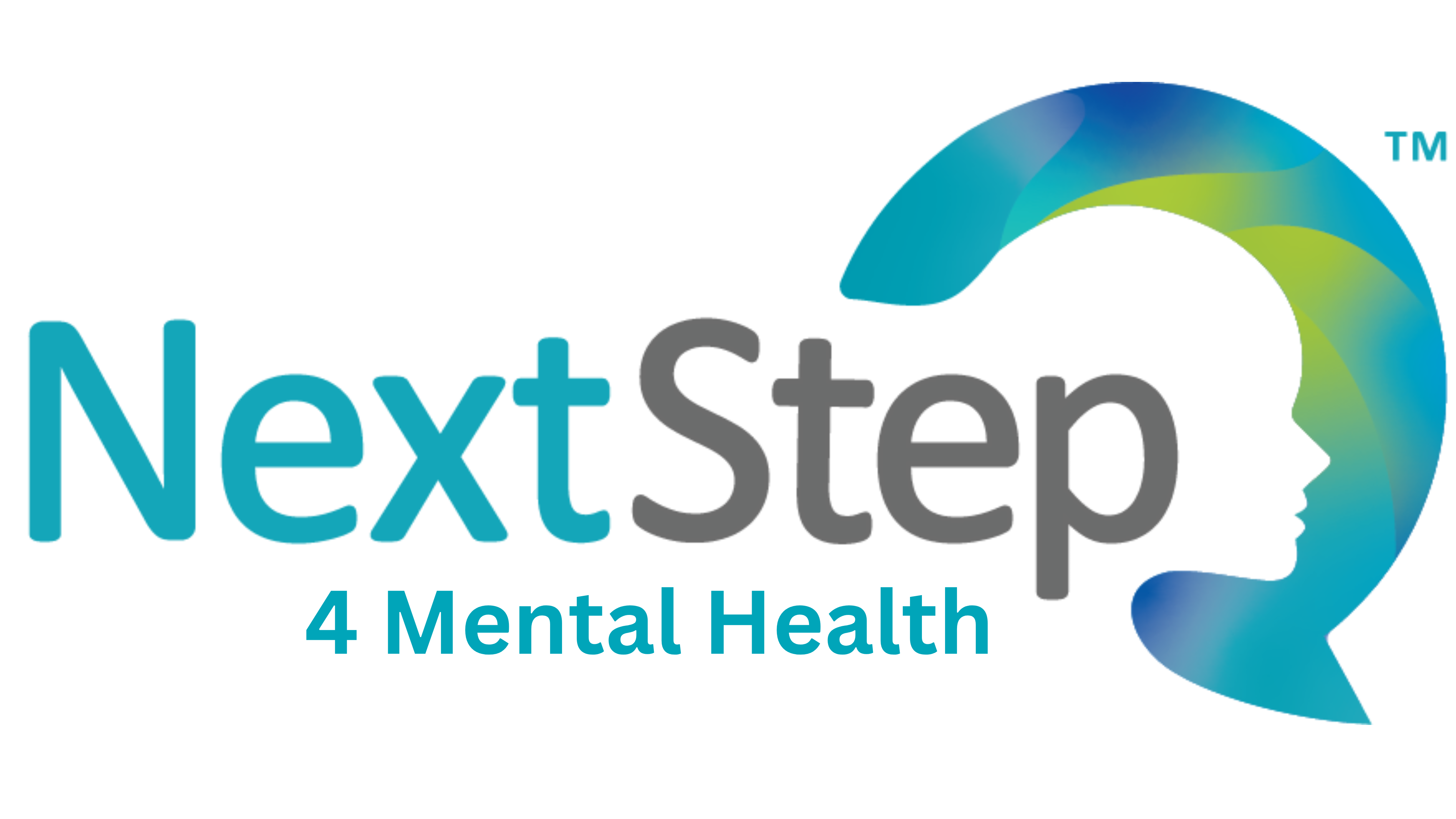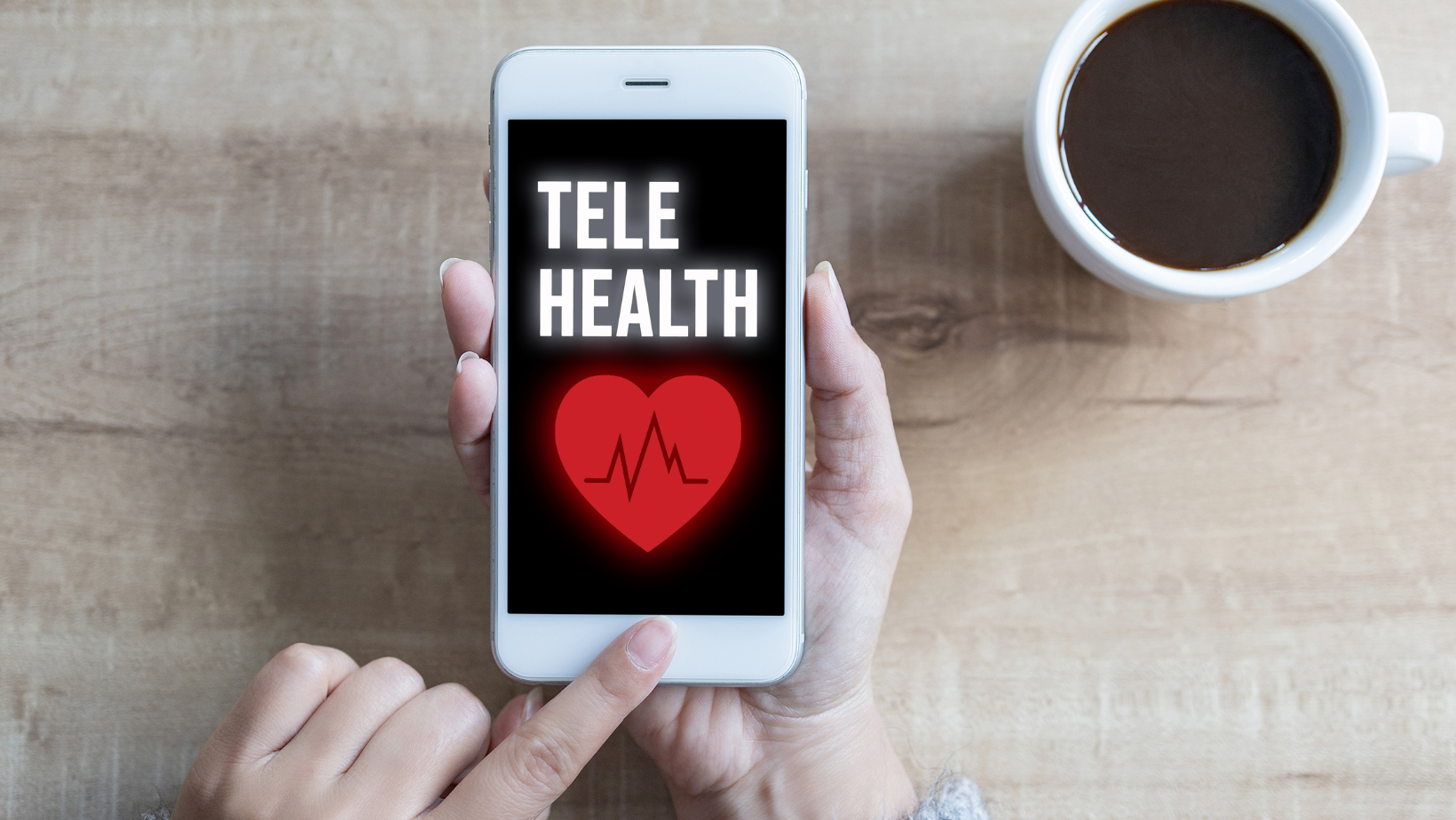
Preparing for Telehealth: What Parents Need to Know
As parents, you’ve no doubt taken your child to dentist appointments, eye doctor appointments, and annual physical exams. These routine visits are similar: arrive at the office, fill out paperwork, wait in the lobby until your name is called. But what about preparing for telehealth?
But what happens when your appointments are virtual? What do parents need to know?
Here at NextStep2MentalHealth, our multidisciplinary team is proud to offer a variety of mental health services through telehealth – and not just for adults. Children and teens can benefit from virtual care.
Below, we share five tips that parents can use to get their children ready for a virtual session.
5 Tips to Remember When Preparing for Telehealth
If your teen already uses video calling apps like FaceTime, Zoom, Google Hangouts, or Skype, then he or she already has a good idea of what a telehealth session is like. For younger children — especially those who don’t use much technology — a virtual appointment can be intimidating. Setting aside the technology, some children may feel a little nervous before an appointment, especially if they’re meeting a new provider for the first time. They may wonder what happens in therapy or what happens during an evaluation.
If your child is scheduled for an upcoming virtual appointment, it’s a good idea to prepare your child ahead of time — especially if it’s their first time experiencing therapy or an evaluation.
1. Know what type of session your child is having

At Next Step 2 Mental Health, your child can receive a variety of services remotely. This includes therapy, coaching, new patient appointments, and more.
When you know what type of service your child is receiving, it’s easier to answer their questions.
Reminder: Virtual sessions are only for non-life-threatening visits. If your child is experiencing a mental health emergency, call 9-1-1 or head to the nearest emergency room. You may also use the new 24/7 crisis hotline by calling 988 for those in crisis.
2. Gather important information before the session starts
Before your appointment begins, make sure you have:
- A list of your children’s current medications
- Your child’s medical history, including allergies, weight, and any previous diagnoses
- A list of questions that your child has (if any)
- A list of questions that you have (if any)
Depending on what type of session your child is having, you might want to write down a list of concerning symptoms that you want to address. Be prepared to answer a variety of questions, including how the symptoms have been occurring, when the symptoms are most severe, and any other related details.
3. Find the perfect location

This is one of the most important steps to having a successful telehealth session. The ideal location is quiet, well-lit, and free from distractions. Consider setting up on the dining room table or in a den. The camera should be at eye-level for your child.
If you have pets or other children, make sure they are situated elsewhere so you can focus on the session too.
It’s also important that no other children or family members can listen in during your child’s session. It’s important your child has privacy during their call.
4. Start with an introduction
You might have a telehealth session with a therapist or pediatrician that you’ve seen dozens of times. But if your child is seeing a new provider, you’ll start with introductions. Let your child know ahead of time if he’ll be meeting a new doctor so he can prepare mentally for the meeting. During the meeting, one of our providers will start by sharing his or her name and title. At this time, encourage your child to introduce himself too! After your child introduces himself, you’ll be asked to confirm a few details too. You’ll already have completed a treatment consent form, but you’ll still confirm your child’s name, date of birth, etc.
Tip: If your child is nervous (which is normal!), practice introductions beforehand!
5. Know your next steps
Before your child’s virtual appointment comes to an end, make sure that you understand the provider’s diagnosis, instructions, and/or advice.
Tip: Keep a piece of paper or notepad nearby so you can take notes during the session, if needed. Don’t hesitate to ask for clarification! We want to make sure your session is valuable and helpful.
Questions? We’re Just a Call or Click Away
At NextStep2MentalHealth, we’re happy to provide comprehensive psychiatric care and therapy for your children. Whether your child has anxiety, depression, or ADHD, we don’t want him or her to miss out on valuable sessions, and we are here to make sure your telehealth experience is successful.
Questions about preparing for telehealth? We’re just a call or click away. Give our Louisville, Kentucky mental health clinic a call at 502-907-5908 or request an appointment here.
Learn More
Effective Treatments for Bipolar Disorder
Bipolar disorder is a complex condition, and the right treatment plan must address all of the complexities of the disorder. The good news is that there are many effective treatments that can help you manage your symptoms so that you can hold a career and enjoy meaningful relationships.
If you or a loved one are suffering from bipolar disorder, we recommend that you seek help as soon as possible. In the meantime, here is an overview of the most common treatments for bipolar disorder.
What Is Bipolar Disorder?
Bipolar disorder is characterized by severe mood swings. The shifts between manic episodes and depressive episodes can be debilitating which may make it difficult — if not impossible — to maintain a satisfying job and relationships. There are three types of bipolar disorder:
- Bipolar I
- Bipolar II
- Cyclothymia
Watch the video below to learn more about bipolar disorder.
Treating Bipolar Disorder
There isn’t a cure for bipolar disorder, but treatment can help manage symptoms so that you can enjoy an improved quality of life. Medication and therapy are effective treatments for bipolar disorder.
Medication
There isn’t just one type of medication used to treat bipolar disorder. There are many different options, and some individuals may do best with a combination of medications. This is especially true if you’re also dealing with other mental health conditions, such as anxiety. Not all medications and dosages work the same for each individual so the key to a successful treatment plan is finding both the right medication and the right dosage.
Examples of medications used to treat bipolar include:
- Mood stabilizers
- Antipsychotics
- Antidepressants
- Antidepressant-antipsychotic
Depending on your unique needs, you may also benefit from anti-anxiety medication as well.
Why a Combination of Medications Can Help Ease Symptoms of Bipolar Disorder
According to the experts at Mayo Clinic, antidepressants alone may not be ideal. While antidepressants help to manage the symptoms of bipolar depression, they can sometimes trigger a manic episode. To help prevent that, a mood stabilizer might also be prescribed. This is just one example that highlights the complexities of bipolar disorder. However, sticking with your medication schedule — even if you start to feel better — is essential when it comes to managing your symptoms.
Psychotherapy
In addition to medication, psychotherapy is another treatment option. Psychotherapy is sometimes called “talk therapy”, and there are many different types of therapy under this umbrella. Psychotherapy includes therapies such as cognitive behavioral therapy (CBT) and is designed to help a person manage troubling symptoms and improve daily functioning, according to the American Psychiatric Association.
Other Ways to Help Manage Symptoms
In addition to medication and therapy, there are still a few other ways to help manage the symptoms of bipolar disorder.
Although one person’s treatment plan may vary to the next, there are a few common tips to make your treatment as effective as possible:
- Stick with your medication schedule and take all medications as prescribed
- Don’t skip your medication even if you’re feeling better
- Adopt healthy lifestyle practices including a well-balanced diet and regular exercise
- Avoid alcohol and recreational drugs
- Prioritize quality sleep (which helps to stabilize your mood)
Most importantly, if you think your current treatment regimen isn’t working, don’t hesitate to reach out. Sometimes just a fine-tuning of your medication is all you need to feel better. To schedule an appointment, give us a call at our Louisville, Kentucky mental health clinic at 502-339-2442 or click here.
Learn More

How to Tell If You’re Making Progress in Therapy
Reaching out for help to manage a mental health condition ー whether it’s an anxiety disorder or a mood disorder ー is a sign of strength. Therapy is often included in many different treatment plans. There are many types of therapy ー including cognitive behavioral therapy (CBT), biofeedback, art therapy, play therapy, couple’s therapy, family therapy ーand they all function a little bit differently.
Regardless of what type of therapy you receive, therapy is an integral part of mental health care.
According to the American Psychiatry Association, therapy “helps build self-esteem, reduce anxiety, strengthen coping mechanisms, and improve social and community functioning. Supportive psychotherapy helps [people] deal with issues related to their mental health conditions which in turn affect the rest of their lives.”

Therapy is very individualized, and because of its individualized nature, no two people experience therapy quite the same way. Building self-esteem, for example, can look different from person to person.
In fact, a common statement we hear is “I don’t feel like I’m getting any better.”
That’s just the topic we explore in this blog. Below, Dr. Dan Guy shares the top signs that help you determine if you’re making progress in therapy.
Therapy Isn’t All or Nothing
Although we’d like therapy to “work” instantly, that’s not the way therapy works. Some people might even say, “I’m not 100% better after one session, so it must not work.”
This is an example of all-or-nothing thinking.
All-or-Nothing Thinking is a Cognitive Distortion, and unfortunately, it’s derailed many people. All-or-nothing thinking means exactly what it says: everything is either a total success or a complete failure.
Example #1 of All-or-Nothing thinking:
“If I am not completely free of whatever ails me, then I (or that doctor or that therapist or that counselor has) have failed. So, I may as well just quit taking this medicine, or stop going to therapy, and definitely stop the hard work of changing my lifestyle. There’s no need to keep exercising, going to bed earlier, eating better, practicing relaxation. If I’m going to keep having depressive episodes, manic episodes, panic attacks, mood swings; why should I make the effort to make these changes that make me uncomfortable.”
Example #2 of All-or-Nothing thinking:
“I’m still feeling anxious about going into the office, so therapy must not be working. I might as well stop going.”
Example #3 of All-or-Nothing thinking:
“I just had my third panic attack month. This medication isn’t working nor is therapy. I thought I’d be free of panic attacks by now.”
All-or-Nothing Thinking happens when you view something (in this case, therapy) as either a success or a failure. The problem with this is that therapy (and the management of mental health disorders) isn’t just black and white. Progress can be measured in increments, not just “success” or “failure.”
Why Therapy Isn’t All-or-Nothing
 In the moment (the moment where you think that therapy isn’t working and isn’t worth it), the emotional brain (much of which is in the limbic system of the brain) says, “It’s not worth it.”
In the moment (the moment where you think that therapy isn’t working and isn’t worth it), the emotional brain (much of which is in the limbic system of the brain) says, “It’s not worth it.”
However, if you can just tap the brakes, take a breath, pause….the intellectual brain can kick in and point out some things that you may not be thinking of at that moment.
The intellectual brain ーmuch of it in the prefrontal cortex that is responsible for cognitive function ー helps you look at your PROGRESS from a couple of different angles (perspectives, etc.).
Focusing on the Progress You Make in Therapy: Duration, Frequency, and Intensity
Therapy helps you make progress, and as therapists, we know that the key to overcoming your obstacles is to focus on progress, not perfection. You can look at progress in terms of duration and frequency.
“Progress is not achieved by luck or accident, but by working on yourself daily.”
– Epictetus, Ancient Greek Stoic philosopher
Frequency
While the emotional brain says that therapy isn’t worth it if you’re 100% free of your struggles, the intellectual brain says, “How often were you having depressive episodes before you started treatment?” Maybe it was once a week, or maybe it was once a month. Identifying your starting point allows you to assess any progress.
If you slow down and consider the questions from your intellectual brain, you may notice that you haven’t had a depressive episode for 3 months. We are talking about FREQUENCY.
If you are having fewer episodes because of longer periods of time between episodes, you are PROGRESSing.
 The chart depicted above, published in this study, shows the correlation between the number of weeks in therapy and the decrease in the frequency of panic attacks.
The chart depicted above, published in this study, shows the correlation between the number of weeks in therapy and the decrease in the frequency of panic attacks.
Duration
Next, your intellectual brain can say, “How long did this depressive ー or panic, mood swing, manic ー episode last. You might notice that each episode used to last for days, weeks, months. If you look at this last episode, maybe it only lasted for a few hours to a day or two. This is DURATION. If the duration of the episode has decreased, once again, this is PROGRESS.

In the chart above, you can see that the duration of depressive episodes is greatly impacted by the type of care received: no care, primary care, mental health care services.
Intensity
Finally, your intellectual brain says, “How bad did your episodes used to be?” If you rated your episodes before treatment, you might have rated it as an 8 out of 10 (SUD: Subjective Understanding of Distress), and this most recent episode was a 6. While it may seem small, it is still PROGRESS.

In the graph above, you can see how therapy (in the case of this study, exposure therapy) helped reduce the intensity of anxiety symptoms. That’s progress, indeed!
Change Is Hard … So Is Therapy
 Remember, change is hard; therefore, therapy, at least GOOD Therapy is hard. Progress can be slow; not like the weight loss commercials that claim you can lose 87 pounds in 5 weeks ー with a small print that says, “results may vary.”
Remember, change is hard; therefore, therapy, at least GOOD Therapy is hard. Progress can be slow; not like the weight loss commercials that claim you can lose 87 pounds in 5 weeks ー with a small print that says, “results may vary.”
Often people in therapy are looking for an excuse to quit the hard work. Then, they can look at their family and friends, and say, “Hey, I tried, but it didn’t work. I gave it a shot. Don’t blame me. Blame them.” (By the way, blaming is another very common Cognitive Distortion that allows a person to stay stuck.)
The Three Keys of Progress: Frequency, Duration, and Intensity
The next time you want to give up, step back, and look at whether you have made progress in any of the areas of FREQUENCY, DURATION, OR INTENSITY. Even if you have made progress in one area, it is still progress. Give yourself some credit for your hard work, and don’t give up because you are too impatient. Your family, your friends, your life is worth the hard work.
Getting Started with Therapy
NextStep2MentalHealth provides adult, adolescent, and pediatric mental health care, and our multidisciplinary team is dedicated to helping our patients with their mental health needs. Call us for an appointment or simply use our online scheduling tool.
About Dr. Dan Guy
 Dr. Guy specializes in the treatment of depression, anxiety, mood swings, relational problems, issues pertaining to self-doubt and self-value, and ADHD. He is skilled in the use of cognitive behavioral therapy (CBT), solution focused therapy, and reality therapy. He also provides psychotherapy for individuals with bipolar disorder and some addictive behaviors. Dr. Guy has helped hundreds of individuals, couples, and families establish loving relationships, healthy communication, and effectively address mental health issues. As a trusted professional, Dr. Guy will walk beside you as you face challenges in your life and will guide you toward healing and fulfillment.
Dr. Guy specializes in the treatment of depression, anxiety, mood swings, relational problems, issues pertaining to self-doubt and self-value, and ADHD. He is skilled in the use of cognitive behavioral therapy (CBT), solution focused therapy, and reality therapy. He also provides psychotherapy for individuals with bipolar disorder and some addictive behaviors. Dr. Guy has helped hundreds of individuals, couples, and families establish loving relationships, healthy communication, and effectively address mental health issues. As a trusted professional, Dr. Guy will walk beside you as you face challenges in your life and will guide you toward healing and fulfillment.
You can now book an appointment with Dr. Guy here or give us a call at our Louisville, Kentucky mental health clinic at 502-339-2442.
Learn More

Boost Your Mental Health with These At-Home Activities
Whether you’re stuck at home quarantining after a COVID exposure or you’re simply settling in for a weekend at home, it’s always good to have a list of at-home activities that boost your mental health.
In this blog, we’ve curated a list of at-home activities that support your mental wellness.

Reading
Reading provides many benefits.
“Reading can even relax your body by lowering your heart rate and easing the tension in your muscles. A 2009 study at the University of Sussex found that reading can reduce stress by up to 68%.” (NAMI California)
Reading also provides a healthy escape from life’s daily stress. Unwind after a busy day with your favorite story or favorite characters. Reading also boosts empathy and understanding.
Need inspiration: Explore GoodRead’s list of relaxing books
Reading can be particularly helpful for individuals struggling with hard or sensitive issues. According to NAMI California, reading about similar situations can help teens work through tough challenges, including issues with bullying.
While reading your favorite fictional story can help you relax, there is also merit in reading non-fiction books, including those about particular mental health conditions.
Need inspiration: Read the top 13 mental health books of 2022
Gardening
Just because you’re at home doesn’t mean you can’t go outside! Spending time outside boosts your mood (and serves up a nice dose of vitamin D), but you can further support mental wellness by gardening. Gardening:
- Boosts your mood
- Boosts your self-esteem
- Improves your attention span
- Provides a good workout (and exercise helps alleviate symptoms of many different mental health conditions)
- Encourages social interaction
Get more gardening tips here.
Music & Family Time
Both listening to music and spending time with friends and family can support mental wellness. So why not combine both of these elements? You can:
- Watch a concert on TV
- Play your favorite music
- Set up an at-home karaoke session
- Play musical chairs (if you have little children at home who would like to play)
- Play music while you make dinner or while you eat
- Write a song to express yourself
Music can reduce your stress and lift your mood.
Movies
Granted, not all movies support mental wellness. That being said, watching certain movies can have a positive effect on your mental health.
Watching a funny movie can make you laugh and laughing releases feel-good endorphins.
But what about sad movies?
“Similar to laughter, crying could activate the release of endorphins, according to a 2016 study. Dramatic movies could increase feelings of gratitude and reduce feelings of isolation. They could also act as a reminder that everyone experiences struggles of their own and invite viewers to reflect on their own problems.” (PsychCentral)
Games
Games, especially strategy games, can boost your mood, improve working memory, and support emotional regulation. Playing board games can be a good opportunity to talk and bond with children and teens — especially if they have a hard time opening up.
Getting the Help You Need
Reading, listening to music, reading, spending time with family, and playing games are all good wholesome activities that support your mental wellness, but sometimes you just need more support. Here at NextStep2MentalHealth, our multidisciplinary team provides comprehensive care for anxiety, depression, bipolar disorder, OCD, PTSD, and more. Whether you need therapy, coaching, or medication management, we can help you get the comprehensive treatment you need.
To get started, schedule an appointment today.
Learn More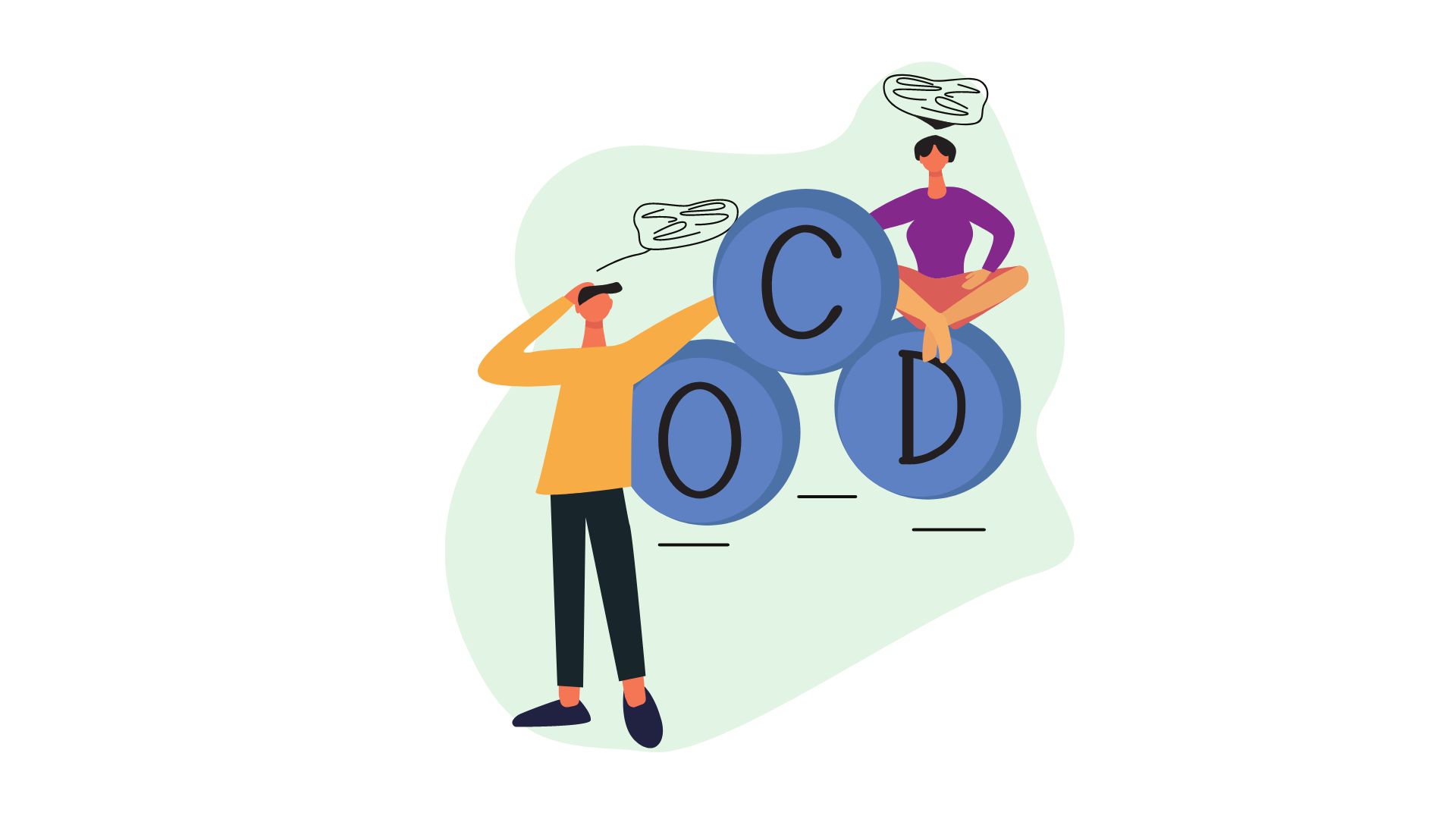
7 Things Teens with OCD Need to Know
Obsessive-compulsive disorder, more commonly called OCD, is a chronic mental health condition marked by intrusive thoughts and behavioral compulsions.
Here at NextStep2MentalHealth, our multidisciplinary team excel when it comes to diagnosing and treating OCD in teens. If you spot the signs of OCD in your teen, it’s never too early to receive professional help.
Here are seven facts that teens with OCD need to know.
1. OCD Is Common
According to the International OCD Foundation, there are about as many kids with OCD as there are with diabetes. That equates to about 20 teens in every medium-to-large high school who struggle with OCD. OCD is a type of anxiety disorder and can often occur with other anxiety disorders or depression.
2. Doubt and Guilt Are Two Hallmark Signs of OCD
TV shows and movies make it appear as though cleanliness is the only compulsion for people with OCD, but the reality is fear of germs or contamination is just one sub-type of OCD. Other sub-types of OCD include:
Doubt
Doubt is a driving force behind many of the compulsions to check and re-check. Doubt is defined as “doubting that you completed the activity even right after you completed it.” This can lead teens to constantly re-checking locks, homework, etc. Understandably, this can affect time management skills and even academic performance.
Guilt
Guilt is another excruciating aspect of OCD. People with OCD may feel guilty about anything, even if it had nothing to do with them. This can cause thoughts such as:
- “Did I offend John Doe?”
- “Did I inadvertently cause XYZ to occur?”
- “Am I a good person or a bad person?”
Other sub-types include counting, hoarding, contamination, false memory, and harm OCD.
3. Cognitive Behavioral Therapy (CBT) Can Help Treat OCD
Cognitive Behavioral Therapy (CBT) is considered to be a top form of treatment for anxiety disorders, and that includes OCD too.
4. The Goal of Treatment Helps You Learn the Tools to Manage Your Symptoms
Throughout your therapy sessions, you’ll continue to learn strategies and tools for managing the cycles of intrusive thoughts and compulsions.
Does your OCD need treatment? Read this blog: Does OCD Need Treatment?
5. Treatment Isn’t Completed Overnight
Often, when teens start treatment for OCD, one of their first questions is “how long does treatment take?” The short answer is: as long as is necessary for any given individual. Managing symptoms is an individualized process and can be impacted by your teen’s willingness to participate in therapy, the presence of any comorbidities, and how severe your teen’s symptoms are.
Understandably, long-term OCD can take a heavy toll on your teen’s quality of life. It may have been a long time since your teen socialized comfortably, held a summer job, or felt at ease doing daily chores. Some teens have never done these things without the obstacle of OCD.
6. Know the Signs of Relapse in Teens with OCD
As with many disorders, your teen may go for long periods with his or her symptoms well managed, but a relapse can knock them off track. Relapses are not uncommon with OCD.
Here at NextStep, our therapists know that the best way to deal with a relapse is to get ahead of it. We discuss relapse in our sessions and help you engage in as many relapse prevention strategies as possible.
That being said, if you or your teen notice any signs of a relapse, don’t hesitate to reach out. The quicker you seek help, the quicker you can get back on track.
7. OCD Can Be Managed
The most important fact to remember is that OCD can be managed. As with any anxiety disorder, lifestyle modifications help support mental wellness. This includes getting enough sleep, following a proper diet and exercise routine, engaging in positive social relationships, and engaging in hobbies or productive work of some type.
At NextStep2MentalHealth, we know how profoundly OCD can impact all aspects of your teen’s life, and if your teen is struggling now, you don’t have to wait until it gets worse before reaching out for help. Our compassionate, non-judgmental team offers a variety of OCD treatments, including medication and therapy.
If you have concerns about OCD, schedule an appointment at our Louisville, Kentucky office. Request an appointment online.
Learn More
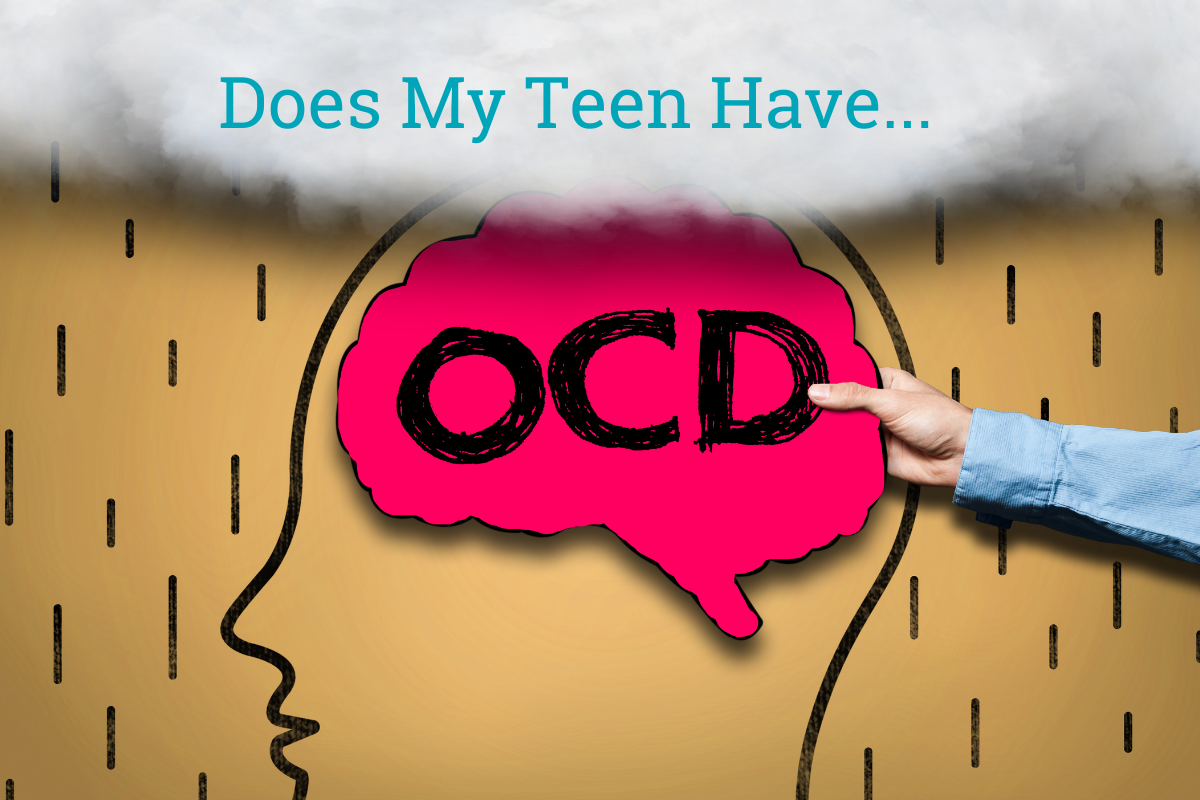
Does My Teen Have OCD?
Obsessive-compulsive disorder (OCD) is one of the many anxiety disorders that can affect teens. About half a million children have OCD, and unfortunately, it’s often overlooked in teens. In some cases, OCD behaviors may be mislabeled as quirky, but the reality is that OCD causes intrusive thoughts and compulsive behaviors that can interfere with your quality of life.
The types of obsessions or compulsions can vary from person to person. Regardless of which obsessions your teen is struggling with, it’s important to know that OCD is treatable. But the first step is to ask for help.
If you’re wondering if your teen has OCD, schedule an appointment with a mental health care provider for an OCD evaluation. In the meantime, here are some common signs of OCD in teens.
Tell-tale Signs of OCD to Look For
Tune in to the video below to learn more about OCD symptoms in adolescents, courtesy of the International OCD Foundation.
Other Signs of OCD in Teens
1. Does Your Teen Take a Long Time to Get Ready?
Ritualistic behaviors can add minutes (if not hours) to your teen’s routines. This means that your teen might take a long time to get ready for the day, to finish homework, etc.
If intrusive thoughts and compulsive behaviors interfere with your teen’s daily life or take up more than one hour (per the National Institute of Mental Health (NIMH)), consider reaching out for help.
2. Your Teen Is Concerned with Contamination
Do you notice that your teen uses too much soap or washes their hands obsessively? Fear of germs and contamination is a common subtype of OCD. If your child has this subtype of OCD, your teen may obsess over contracting an illness or spreading germs.
Your teen may:
- Avoid doorknobs or pushing buttons in public spaces
- Continually ask if their food is cooked thoroughly
- Check (and recheck food expiration dates)
- Wash hands frequently (more than recommended by the WHO)
- Encourage other family members to constantly clean their hands
Read: Navigating OCD in Post-Pandemic World
3. Your Teen Has Meltdowns
If your teen has rituals in which certain events must be performed in a specific sequence, and you interrupt this process innocently, your teen may feel compelled to go through the entire process again. This can make your child frustrated and even angry.
4. Your Teen Is Concerned He Did Something Wrong
Another subtype of OCD is morality. Your teen may constantly worry that he’s done something wrong. This is also called moral scrupulosity, and it’s an obsessive concern with whether or not one is being good or bad — and it can occupy a lot of your teen’s mental bandwidth.
5. Your Teen’s Schoolwork Is Suffering
Intrusive thoughts and ritualistic behaviors can suck up a lot of your teen’s time at school. For example, ruminating on obsessions can make it hard for your teen to focus on school lectures or get homework done. Getting the right OCD treatment can help your teen manage his/her anxiety, which can lead to a more productive day at school.
Perfection is another subtype of OCD, and the desire to constantly deliver perfect work can make it hard to ever finish assignments on time.
6. Your Teen’s Personal Relationships Are Suffering
OCD doesn’t just impact your teen’s academic performance. Unmanaged OCD can start to affect your teen’s relationships with you, your family, and their friends. You might consider OCD treatment for your teen if:
- Your child’s thoughts make it hard to focus at school
- Your teen’s compulsions limit his or her ability to enjoy time with friends or family
- Their OCD is getting in between you and your teen
7. Your Child Continually Asks If He’ll Be Okay
Children and teens may struggle with many of the same intrusive thoughts as adults, including fear of contamination and fear of harm. You might suspect your teen is struggling if he continually asks if “he’ll be okay”. According to the International OCD Foundation, this can be a sign of pediatric OCD.
8. Your Teen Demonstrates Symmetry
Obsessions with symmetry and related compulsions, such as ordering and arranging, have received increased empirical attention in recent years. Analyses of obsessive-compulsive symptomatology in obsessive-compulsive disorder (OCD) have consistently identified a factor characterized by symmetry concerns and related rituals. In OCD, symmetry obsessions are characterized by the need for things to be perfect, exact or “just right,” symmetrical, or correctly aligned, and related compulsions include ordering and arranging, evening up or aligning things, and touching or tapping.
Here’s an example: If your teen bumps his right knee on the table on accident, he may feel compelled to go back and bump his left knee on the table.
Another example: your teen may spend hours arranging or rearranging items on the shelf in his or her room.
Other signs of OCD in teens include:
- Excessive checking (re-checking that homework is done, lights are off, the door is locked, etc.)
- Excessive washing, tidying up, and/or cleaning
- Repeating ritualistic behaviors until they are “just right” … or starting over again until they are right
- Obsessing with rearranging things
- Mental compulsions which may include excessive praying or mental reviewing
- Frequent apologizing
- Reciting lucky words or numbers or phrases; using lucky items, etc.
If you notice any signs of OCD in your teen, seeking professional treatment can help restore the quality of your child’s life.
How Is OCD Treated?
At NextStep2MentalHealth, we know how profoundly OCD can impact all aspects of your teen’s life, and if your teen is struggling now, you don’t have to wait until it gets worse before reaching out for help. Our compassionate, non-judgmental team offers a variety of OCD treatments, including medication and therapy.
If you have concerns about OCD, schedule an appointment at our Louisville, Kentucky office. Request an appointment online.

8 Early Warning Signs of Postpartum Depression
Just like there are many different types of anxiety, there are also different types of depression. Postpartum depression is a type of depression that affects new mothers, and it can start anywhere from a few days to a year after the birth of a baby.
May 2 – 8 is Maternal Mental Health Awareness Week, so now is the perfect time to raise awareness of postpartum depression.
What Is Postpartum Depression?
Due to the immense shift in hormones (and the dramatic change in sleep schedules), baby blues are common for most new mothers. Approximately 80% of new moms have baby blues. Baby blues are characterized by crying, feelings of overwhelm, and sadness. However, baby blues typically dissipate a few days (or up to two weeks) after childbirth.
Postpartum depression is more severe than baby blues and doesn’t ease up as time progresses.
Watch the video below to learn more about the differences between baby blues and postpartum depression.
8 Signs of Postpartum Depression
Other signs of postpartum depression include:
- Your baby blues aren’t going away
- Feeling disconnected from your baby (or partner)
- Intrusive thoughts, such as checking repeatedly on your baby
- Intense crying
- Overwhelming feelings of anxiety
- Sadness
- Changes in eating or sleeping habits
- Thoughts of self-harm
If you notice any of these symptoms, don’t hesitate to reach out for help. Asking for help doesn’t mean that you’re not a good mother. Asking for help is one of the best things you can do for yourself and for your baby. Postpartum depression, and other maternal health disorders, aren’t a reflection of your mothering abilities.
Getting Help with Baby Blues and Postpartum Depression

Taking care of yourself is essential when you’ve just had a baby. Your body needs rest, hydration, and good nutrition. Although the first few weeks can be an adjustment, you can find help in many ways including asking a partner to watch the baby while you practice self-care, shower, eat, and rest. You can consider hiring a cleaning service for a few weeks to assist with household chores while you recover.
That being said, friends and family can help mitigate some of the feelings of overwhelm if you have baby blues, but if you have postpartum depression, you may also benefit from therapy and/or antidepressants. Here at NextStep2MentalHealth, our team is experienced at treating co-occurring disorders, and if you’re also struggling with postpartum anxiety, we can help.
Additional resources:
- BLOG: Overcoming the Negative Self-Talk Cycles of Depression
- BLOG: 11 Ways to Help a Loved One with Depression
- BLOG: 32 Ways to Help a Loved One with Depression (When They Don’t Want to Talk about It)
- Maternal Mental Health Leadership Alliance
- Postpartum Support International
National Suicide Prevention Hotline at 1-800-273-TALK (8255).
If you are looking for a trusted and experienced mental health doctor or therapist, contact us today to get started exploring your multidisciplinary postpartum depression and postpartum anxiety treatment options.
Learn More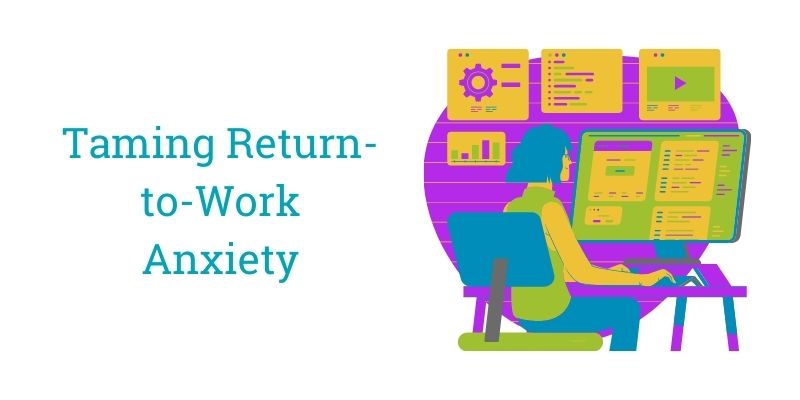
6 Tips for Dealing with Return-to-Work Anxiety
5 Tips for Facing Your Return-to-Work Anxiety
These tips can help you manage your anxiety.
1. Feel your feelings about return-to-work anxiety
Acknowledging your feelings is the first step in facing your return-to-work anxiety. It’s normal and to be expected to feel a little anxious about any big changes like this. Remember that feeling some anxiety about big changes is normal. There are many tips for working through these feelings. You might find that journaling is helpful and talking with your therapist can help you manage these thoughts and feelings.
2. Plan ahead and reawaken old habits
While you can’t control everything regarding your return to work, there are some things you can plan. Planning what you can gives you a sense of control. For example, you may need to plan your lunches (brown bag lunches or meal prepped boxes, etc.) instead of eating at home.
Lay out your outfits or items you need for the next day, so your mornings are calmer and less rushed.
3. Find the silver linings
Although there is a lot of change happening right now, try to find the silver linings. Take a minute to reflect on your favorite parts of working at the office. Did you enjoy coffee breaks with a co-worker? Maybe you enjoyed your lunch time walks around the campus? Focus on anything that sparks joy. Remembering your favorite parts of your day at the office can help make your transition easier.
In addition to remembering your favorite elements of working in an office, make new traditions to tame return-to-work anxiety. Even little things, like buying a new lunch bag or making new habits (like listening to a fun podcast on the way to work) can help make your transition easier.
4. Be compassionate with yourself and others
Set realistic goals and expectations. It’s okay to not love returning to work right away. Be compassionate and easy on yourself as you go through this transition. Likewise, be compassionate with others who may also be experiencing similar feelings as you.
Believe in yourself. Develop your skill of self-confidence which can help ease anxieties.
“The secret to self-confidence is repetition, repetition, repetition.”
5. Practice mindfulness
6. Ask for help
Even with your best efforts, you might still need help managing your social anxiety, and that’s ok. Social anxiety, like all anxiety disorders, can be managed. If you are looking for a trusted and experienced mental health doctor or therapist, contact us today to get started exploring your multidisciplinary social anxiety treatment options.

9 Surprising Ways Anxiety Shows Up in Kids
Anxiety in kids is like an iceberg: what you see is often just a fragment of what’s beneath the surface, and that’s especially true for children. While many parents might associate anxiety with intense worry (because that’s part of it), the reality is that anxiety can cause many different behavioral issues and feelings in children.
Below, we’ll take a look at nine surprising ways that anxiety can show up in kids.

1. Trouble Falling Asleep and Staying Asleep
Anxiety and sleep problems are connected in a vicious circle. Anxiety can contribute to sleep problems, and sleep problems can make anxiety worse. Difficulty falling asleep and/or staying asleep is a classic sign of anxiety in kids. For children with anxiety, an anxious train of thought can keep your little one awake long after bedtime. Some kids even have anxiety about waking up late, missing their alarm or school bus, feeling tired in the morning, or other school-related events.
Tip: Always practice good sleep hygiene and consider using warm-colored lights around bedtime.
2. Anger and Irritability
Anxiety in children happens when there is:
- A perceived threat (e.g., a school project or an upcoming date)
- An underestimation of coping skills (e.g., “I will never pass this math test.”).
The combination of perceived threats and underestimating coping skills leads to feelings of helplessness, and in many cases, helplessness leads to frustration, which leads to anger.
Interestingly, both anger and anxiety are activated in your amygdala. Your amygdala is the “threat center” of your brain. If your child’s brain perceives a threat (even if it’s overestimated), his or her amygdala activates the flight-or-fight response. This creates a flood of hormones designed to make you stronger and faster. While this helps us flee or fight against threats, it creates issues when the anxiety is chronic. The flight-or-fight response creates rapid heart rate, rapid breathing, and can make you feel on edge.
It’s possible that remaining in this state for a prolonged time can lead to irritability, agitation, and anger.
3. Defiance
A child with anxiety often feels like his or her life is out of their control. This can lead to your child trying to regain control in any way that he or she can. For example, this could explain a sudden outburst over a red jacket instead of the blue jacket.
4. Chandeliering
Chandeliering is “pushing the hurt down until one day it’s all unleashed at once in a fit of rage (shooting that person up to the chandelier). [Brené Brown]
Sometimes children try to hide anxious feelings, especially if they don’t know how to talk about it. Chandeliering happens when a child has a seemingly out-of-nowhere tantrum or outburst. It may seem out of place, but in reality, the child has been hiding anxious feelings until they all bubbled up over the top.
5. Lack of Focus
Inability to focus is often linked with ADHD, but ADHD isn’t the only mental health condition that can contribute to difficulty focusing. Children with anxiety can also struggle to focus both at home and at school.
6. Avoidance
“I don’t want to go.” Has your child ever said he or she didn’t want to go to school? Or maybe they suddenly don’t want to attend a sporting event? Avoidance can be another sign of anxiety. Avoidance can create bigger problems though. For example, if your child is trying to avoid schoolwork, the continual procrastination can create more trouble when all of the homework builds up. This can lead to even more anxiety about the sheer amount of catchup work.
7. Overplanning
Overplanning can show up as questions. For example, if your child is invited to a birthday party, he may plan what gift to bring, but he may also ask:
- Who else will be there?
- What will they do when they are at the party?
- What time will you be back to pick up him?
- What food will be served?
Overplanning is a coping mechanism to help ease anxiety, and it’s a way that your child tries to find control.
8. Negativity
Anxiety can create negative thoughts, including:
- I can’t do this
- I’ll never pass my history test
- I’m too shy to do this
- I’m not good enough for this
9. Change in Eating Habits
Is your child suddenly nibbling at their food? Anxiety can cause physical symptoms, such as upset stomach, headaches, etc. This can make your child lose his normal appetite.
Treating Anxiety in Kids
Anxiety disorders can be treated, and the right treatments can restore your child’s quality of life. Common treatments for pediatric anxiety include talk therapy, play therapy, counseling for the family, and in some cases, medication.
NextStep2MentalHealth provides pediatric mental health care, and our multidisciplinary team is dedicated to helping parents and their children with their mental health needs. Call us for an appointment or simply use our online scheduling tool.
Learn More
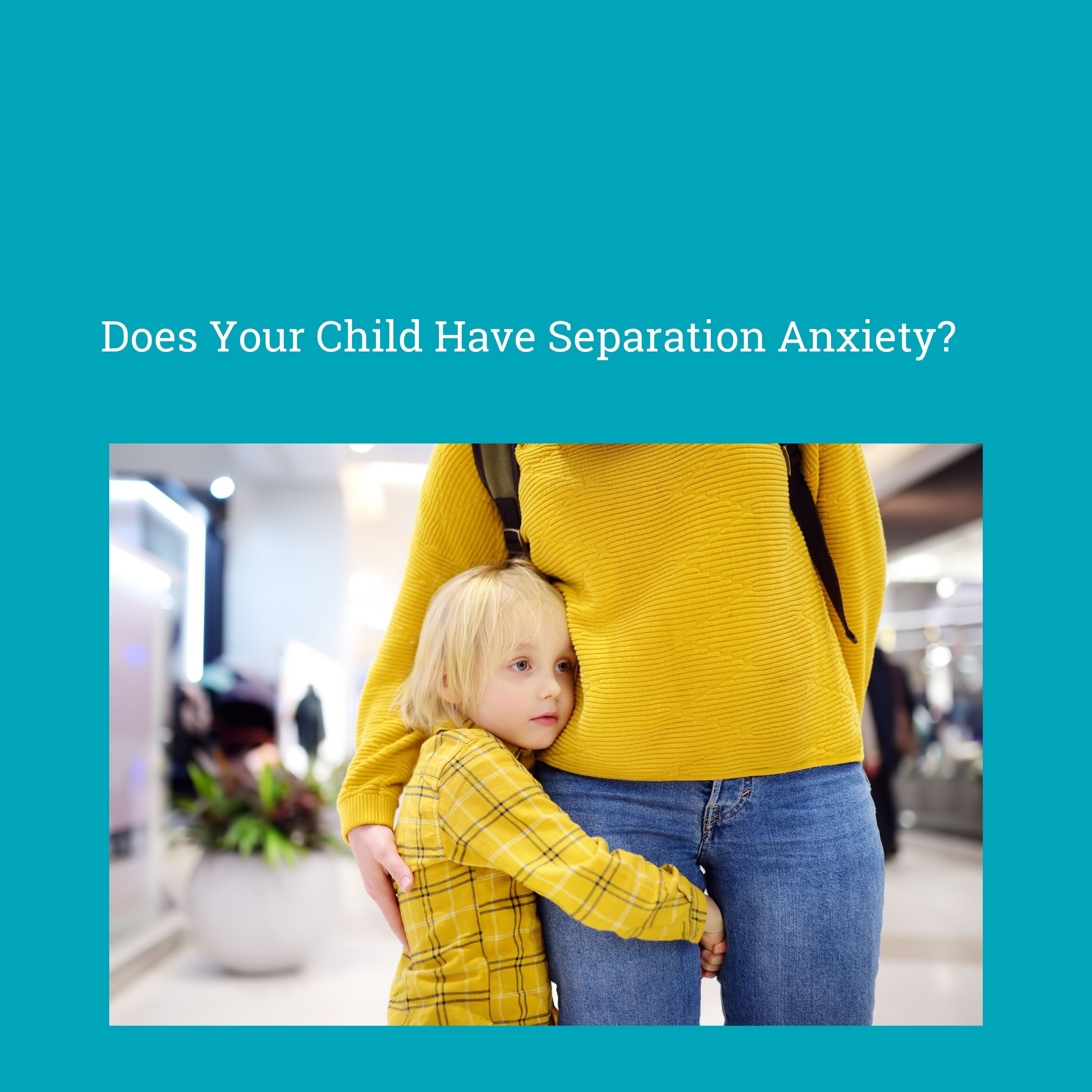
Does Your Child Have Separation Anxiety?
Separation anxiety tends to appear in infants around the age of 6-10 months. This is around the age when babies start to be more aware of their surroundings, and that includes when their parents are present — or not. Most toddlers outgrow this, but for some children with anxiety, separation anxiety can continue on well into the elementary school years.
In this blog, we explore the signs of separation anxiety and tips for helping your child feel better.
Signs Your Child Is Dealing with Separation Anxiety
![]()
![]() According to the DSM–IV–TR, separation anxiety is defined as:
According to the DSM–IV–TR, separation anxiety is defined as:
“An anxiety disorder occurring in childhood or adolescence that is characterized by developmentally inappropriate, persistent, and excessive anxiety about separation from the home or from major attachment figures. Other features may include marked anticipatory anxiety over upcoming separation and persistent and excessive worry about harm coming to attachment figures or about major events that might lead to separation from them (e.g., getting lost).”
Red flags of separation anxiety in kids include:
- Refusing to go to school
- Fear of being alone
- Fear of going to bed alone (without you)
- Nightmares
- Physical symptoms, including vomiting, headaches, nausea, stomach pain)
In addition, the DSM–5 also notes that the symptoms must be present for at least 4 weeks in children before a diagnosis can be reached. Adults can also be diagnosed with separation anxiety, but their symptoms must be present for at least 6 months.
Top Tips on How to Ease Your Child’s Separation Anxiety
 Use transitional objects
Use transitional objects
Transitional items help your child feel safe because they are a symbol of you. Your child connects the object to you and can feel reassurance. Examples of transitional objects include:
- A locket with a picture of you or your family (certain sellers on Etsy can also engrave special messages on lockets)
- Favorite blanket (spritzed with calming essential oils for extra calm vibes)
- A stuffed toy (with a recording of your voice)
Older children may not like a soft blanket or stuffed toy, but hand-written notes, a shared sweatshirt, or a locket can be beneficial for older children.
Acknowledge your child’s fear but stay positive
It’s good to acknowledge your child’s fears, but it’s equally important to continue to talk in a positive, calm manner. If your child senses that you are worried/fearful, it can add to his or her fears. Children easily pick up your own emotions, and it can impact their reactions too. Let your child know what will happen when you are gone, whether that’s an out-of-town work trip, a regular day at the office, or a quick trip to the grocery store.
Create a short and sweet goodbye ritual
Whether you’re dropping off your child at daycare, school, or the sitter’s house, it’s important to say goodbye. Skipping out without a proper goodbye can compound your child’s fears. That being said, goodbyes that very long can also prolong the transition and the lingering anxiety.
The best solution is a short and sweet goodbye. Examples include:
- A special handshake
- Butterfly kisses
- A hug and a special phrase (example: I love to the moon and back)
The Bottom Line
While some anxiety is normal when saying goodbye, untreated separation anxiety (or another type of anxiety disorder) can impact your child’s ability to function at home or school. If you spot the signs of age-inappropriate clinginess, tantrums, withdrawal from family or friends, preoccupation with intense guilt, refusal to go to school, excessive fear of leaving the house, or stomach pains/nausea, your child might benefit from an anxiety evaluation.
The good news is that separation anxiety, like all anxiety disorders, can be treated. Common treatments for anxiety include talk therapy, play therapy, counseling for the family, and in some cases, medication. Your therapist can also recommend the right lifestyle changes (such as changing up your goodbye ritual or making a locket) that can help your child.
NextStep2MentalHealth provides adolescent (and adult) mental health care, and our multidisciplinary team is dedicated to helping parents and their children with their mental health needs. Call us for an appointment or simply use our online scheduling tool.
